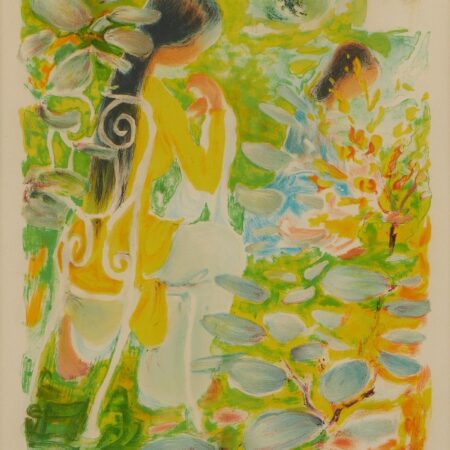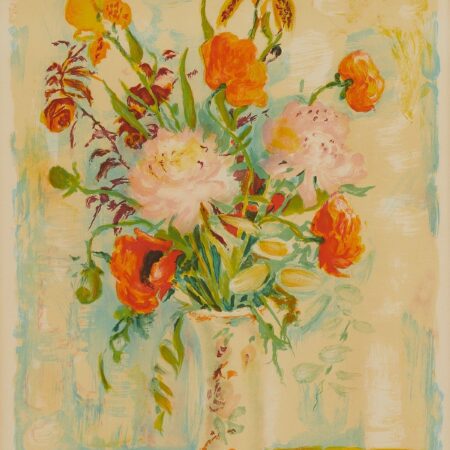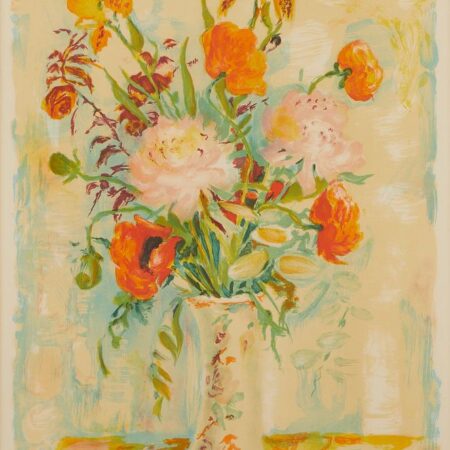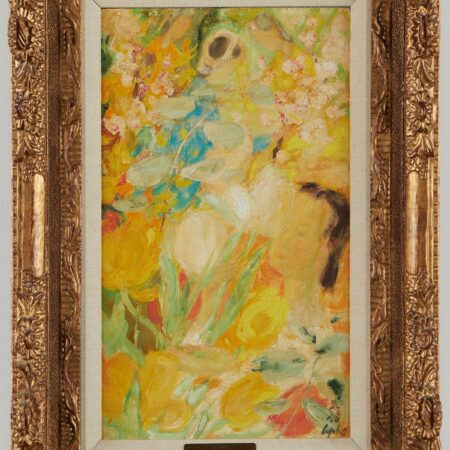
Le Pho
Vietnamese Artist
1907-2001
Interested in selling a piece by Le Pho?
We have received top dollar for Le Pho works. Auction is the best way to quickly and transparently get maximum dollar for your artwork.
Cameron Booth: Minnesota Master
Biography
Cameron Booth was born in 1892 in Erie, Pennsylvania. After moving several times, his family settled in Moorhead, Minnesota, where Booth graduated from high school in 1912. During his studies at the Art Institute of Chicago, Booth was introduced to the work of Picasso, Cezanne, and Braque, as well as Post-Impressionism and Italian Primitives.
Drafted into the army in 1917, Booth was in France when World War I ended. He stayed and studied with the Mexican cubist Angelo Zaraga, supporting himself in part by selling his sketches and portraits. Booth returned to Minnesota in 1921, teaching for a time at the Minneapolis College of Art and Design before moving to the Leech Lake Reservation at Onigum. There, Booth began sketching and painting northern Minnesota landscapes and scenes of Ojibwe Indian life.
Booth’s oil paintings won recognition at the Minnesota State Art Society and were presented in the Annual Exhibition of American Paintings and Sculpture in Chicago. He was commissioned for painting installations and regularly presented his work in exhibitions and competitions.
After a return to Europe to study with Andre L’hote in Paris and Hans Hoffman’s school on the Italian Island of Capri, Booth continued teaching in Minneapolis and became director of the St. Paul Gallery and School of Art in 1931. During the 1930s he led the Public Works of Art Project to provide employment to artists, and in 1942 he won a Guggenheim fellowship. He traveled and exhibited throughout the American West and in New York, and taught at the University of Minnesota. He died in 1980.
Cameron Booth’s Paintings
Booth’s works include Minnesota landscapes, portraits, and pictures of animals, especially horses. He often used color and rough brushstrokes to convey emotion and movement, and worked in many painting media, from oil with gouache to watercolor and acrylic.
His work is included in the collections of many institutes and galleries, including the Bertha Schafer Gallery in New York, the Minneapolis Institute of Arts, the Art Institute of Chicago, the Metropolitan Museum of Art, and the Museum of Modern Art in New York.

Léonard Tsuguharu Foujita (1886-1968), “Jeune Fille Assise un Chat,” color lithograph on paper. Sold for $650 in Fine and Decorative Arts of the Globe, January 19, 2019.
Tsuguharu Foujita’s Japanese Cat Art (Prints Value & Price Guide)
Tsuguharu Foujita was known not only for his art which blended techniques from around the world, but also for being quite the fashion icon of his time. His round glasses, gold hoop earrings, and boxcar mustache perfectly suited his vibrant personality. Here, we’ll cover a quick biography of the artist, what artistic mediums and subjects he was known for using, and the value of his works.
Who Is Charles Schulz?
Charles Schulz was born on November 26, 1922 in Minneapolis, Minnesota to parents Carl Schulz and Dena Halverson. He grew up in Saint Paul, MN, and graduated from Central High School before being drafted into the United States army in 1943. After the war ended, Charles Schulz returned to Minnesota, where he found a job teaching for Art Instruction, Inc.
In June 1947, Schulz began a run of one panel cartoons called Li’l Folks, which were published weekly in the Saint Paul Pioneer Press through January 1950. During this same time period, Schulz had 17 one-panel drawings printed in the Saturday Evening Post.
In 1950, Schulz approached United Feature Syndicate with his Li’l Folks comics, presenting some new four-panel samples as well as his traditional one-panel comics. The Syndicate preferred his longer, four-panel comics, and agreed to represent his comics under the new name Peanuts. On October 2, 1950, the first Peanuts comic strip appeared in 7 newspapers across the US.
Schulz continued to draw Peanuts comic strips for the next 50 years, and collaborated to create numerous TV specials featuring his characters. Besides his work with the Peanuts cartoon, Schulz was also an avid fan of hockey and other winter sports. Before the commercial success of Peanuts, Schulz also created a sports-themed comic strip called Its Only A Game. After moving to Santa Rosa, California in 1969, Schulz opened a hockey rink called Redwood Empire Ice Arena. Schulz was still an active hockey player later in life, and hosted an over-75 hockey
tournament at his arena in 1998.
Schulz was diagnosed with colorectal cancer among other health issues in 1999, and announced his retirement from the Peanuts comic on December 14th of that year. He died of a heart attack in his sleep on February 12, 2000, just two days before his final Peanuts strip would be published.
History of the Peanuts Cartoon
Charles Schulz visited New York in 1950, where he presented his four-panel Li’l Folks comic strips to United Feature Syndicate. They liked his work and agreed to represent it, but the group faced some legal challenges from the creator of the 1930s cartoon Little Folks, who felt that the name Li’l Folks was infringing on his copyright. Schulz was unable to come up with a marketable alternative name, and the comic was eventually named Peanuts against his wishes.
The first Peanuts strip appeared in newspapers on October 7, 1950 as a daily strip. The first Sunday strip of Peanuts was released on January 6, 1952. The early comics had a crisp, minimalistic style and featured characters such as Charlie Brown, Shermy, Snoopy, Linus, Lucy, and more.
Throughout the 1950s and 60s, Schulz continued to refine his style and add new characters such as Peppermint Patty, Franklin, and Woodstock. Although Peanuts did not explicitly address social issues of the time, strips showing mixed gender sports teams and racially integrated schools resonated with many readers in a time when sexism and racial segregation were still commonplace.
Peanuts left behind an impressive legacy, and the characters have been drawn, painted, sculpted and otherwise remembered by thousands of artists since Schulz’ death.
What Determines the Value of Peanuts Cartoons?
- Date: The date of print is a useful way to determine the value of Peanuts comic strip art. In the 1950s, Peanuts ran in only a small number of newspapers, and the strips had a distinct style that featured cleaner, simpler lines than later works. Because of their age and unique style, Peanuts art from this period can be very valuable to the right collector.
The 1960s and early 1970s were considered the golden age of Peanuts, when national interest in the characters spiked, and merchandise of the characters became widely available. A far greater number of newspapers printed the comics during this period, which introduced the characters to families across the country. Many collectors have a particular interest in this period of Peanuts history, which increases the value of Peanuts art from this period.
Peanuts comics produced between about 1975 and 2000 fall outside of this ‘golden era’. There is more art from this period on the market and fewer people collecting it, making them less valuable on average than comics from the 1950s and 60s.
- Original vs. Printed: Original art for Peanuts comic strips by Charles Schulz can be very valuable, often selling for tens of thousands of dollars. Original drawings of individual characters can often be worth a few hundred to a few thousand dollars as well. Peanuts comic strips printed in newspapers and books of reprinted Peanuts strips are rarely worth more than a few dollars unless they are signed by Charles Schulz. The exception is very early strips from the 1950s. In its original 1950 debut, Peanuts only ran in 7 newspapers. Because of this low circulation, Peanuts cartoon strips from this period have the potential to be more valuable.
- Other Considerations: In general, the larger, half-page Sunday comics are more valuable than the four-panel daily comics. The daily comics in turn are more valuable than single-panel sketches of the characters. Condition of the comic is another important factor to consider. Yellowing, smudges, tears, creases, or other signs of deterioration can lower the value of the comic strip.
Contact our specialists to learn more about the value of your Peanuts cartoons
What Determines The Value of Paul Cadmus Art?
Paul Cadmus art pieces have a huge range of final sale prices at auction, so determining the value of a particular Paul Cadmus piece may prove difficult for the average collector. The biggest difference in value comes from the art medium, with tempera paintings generally commanding far higher values than Cadmus’ other works due to their complexity and relative rarity. Other factors influencing the value of a Cadmus piece include its size and level of detailing.
- Medium: Perhaps most important in determining the value of a Paul Cadmus art piece is looking at the medium. Because egg tempera was a highly time consuming medium to work in, Cadmus produced relatively few tempera pieces in his lifetime. These works are far more complex and scarce than his other works, making them his most valuable pieces.
- Size: As is true with many works of art, larger pieces by Paul Cadmus tend to be more valuable. The majority of his drawings and paintings are 20 inches or less in their largest dimension and feature a single male figure. Because of this, larger pieces, especially those showing full scenes, tend to be particularly sought after.
- Detail: Cadmus’ drawings exhibit a huge range of detail from rough charcoal on paper nudes to lifelike figures drawn onto hand toned paper. Unsurprisingly, drawings that include extra detail, such as added color or particularly fine shading, may be worth thousands of dollars, while more basic sketches may be worth a few hundred.
The Values of Paul Cadmus Drawings and Paintings

Paul Cadmus, The Fleet’s In!
One of Cadmus’s most famous pieces, The Fleet’s In! was produced in 1934 while Cadmus was working for the Public Works of Art Project. After it was pulled from the exhibition at the Corcoran Gallery for its controversial depictions of sailors carousing with locals on shore, the painting was moved to assistant Secretary of the navy Henry Roosevelt’s house, where it remained until his death in 1936. It was then moved to the Alibi club for about four decades, then finally to the Naval History and Heritage Command, where it remains to this day. Since this piece has never been formally bought or sold, its value cannot be reliably estimated.
Paul Cadmus, Seven Deadly Sins
The Seven Deadly Sins are a collection of seven paintings produced by Cadmus between 1945 and 1949. Each painting is a portrait of one sin depicted in surreal and horrifying detail. The collection is currently held by the Metropolitan Museum of Art in New York. Although the Seven Deadly Sins paintings have never been publicly sold, studies for the paintings have sold for between $1,800 to $3,500 at auction.
Paul Cadmus, Lloyd and Barbara Wescott
A 21×35 tempera painting of a couple with a red barn, a horse, and two cows in the background. This painting is an unusual departure from Cadmus’ usual subject matter, and also has the distinction of achieving the highest ever price for a Cadmus painting at auction. It sold once in 1998 for $2,430,000 and again in 2006 for $452,800.
Estimate: $300,000-$500,000
Result: $2,430,000

Paul Cadmus, Stewart’s
A detailed and action packed etching depicting a group of men drinking and crowding around a table. This etching was made available in a limited series in the 1930s.
Estimate: $2,000-$4,000
Result: $2,800
Paul Cadmus, Sailors and Floosies
This painting from 1938 depicts three pairs of “sailors and floosies” meeting up in a litter filled riverside park. The painting was controversial in its day, and faced similar criticism to Cadmus’ earlier painting The Fleet’s In! This painting is currently held by the Whitney Museum of American Art.
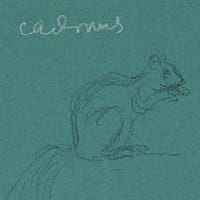
Paul Cadmus, Nude & Squirrel
This crayon on green paper sketch depicts the back half of a naked crouching man as well as a squirrel.
Estimate: $1,000-$1,500
Result: $1,313
Paul Cadmus, Seeing the New Year In
This painting depicts a group of stylish young people celebrating the New Year in a private room. Participants can be seen drinking, hugging, laughing, and crying throughout the scene.
Estimate: $400,000-$600,000
Result: $314,000

Paul Cadmus, Study for Winter
A crayon on paper drawing of a nude male holding out his hands as if to warm them.
Estimate: $1,200-$1,800
Result: $1,625
Paul Cadmus, First Study (1964) for a David and Goliath
An unusual charcoal and pastel on paper drawing of two men in a room surrounded by drawings of David and Goliath. The younger blonde man on a bed is pulling the hair of an older man holding up a drawing.
Result: $314,000
The Values of PaJaMa Photographs

PaJaMa (Margaret French & Paul Cadmus), Provincetown
A silver gelatin print photograph from 1947 depicting an unknown hooded figure looking out at a beach.
Estimate: $800-$1,200
Result: $1,050

PaJaMa (Margaret French & Paul Cadmus), Saltaire Fire Island
This 1938 photograph shows Paul Cadmus lying partially inside a metal structure on the beach, while Margaret French lies perpendicular to him against the same structure.
Result: $800

PaJaMa (Margaret French & Paul Cadmus), Fire Island
A photograph depicting Cadmus and Margaret French on the beach at Fire Island, New York with French laying in the sand and Cadmus straddled above her.
Estimate: $1,500-$2,500
Result: $2,400

PaJaMa (Margaret French & Paul Cadmus), Fire Island
This silver gelatin print photograph shows Paul Cadmus sitting nude on a wooden spool on the beach, a towel draped over his shoulder as he poses and looks away from the camera.
Result: $2,600
How to Identify a Paul Cadmus Signature
Paul Cadmus typically signed his works “Cadmus” in cursive lettering in one corner of the front of his work. He would occasionally sign his first name or include a date as well.
How Can I Sell My Paul Cadmus Original?
Because Paul Cadmus worked in a wide variety of mediums over his nearly seven-decade-long career, determining the value of your Cadmus art piece can sometimes prove challenging. To learn more about the value and authenticity of your piece, consider taking it in for an expert appraisal. A trusted local auction house can appraise your art and discuss the best selling options for your specific needs.
Revere Auctions Sells Your Paul Cadmus Art
Revere Auctions can help you sell your Paul Cadmus paintings, drawings, or PaJaMa photographs at auction for the best possible price. Our experts at Revere Auctions have years of experience selling Paul Cadmus art pieces. We are ready to help you with any stage of your art journey, whether you are looking for an estimate of value, a USPAP certified appraisal, art restoration, or an effortless way to sell your art. We advertise our sales on more auction platforms than any other auction house in America, and regularly achieve record prices for our objects. If you are interested in selling with us, please reach out for a free online appraisal of your piece today.
Discover Works From Artists Like Paul Cadmus
If you enjoy the work of Paul Cadmus, here are a few related artists who may also spark your interest.
George Tooker
George Tooker is a figurative painter who often collaborated with Cadmus. He is known for his use of magic realism and surrealism in his paintings.
Jared French
Jared French was a longtime lover and artistic influence of Cadmus. He is known for his egg tempera paintings as well as his work on the PaJaMa collective.
George Platt Lynes
George Platt Lynes was a fashion photographer who specialized in photographing gay artists and writers. He was a regular visitor to Fire Island and took part in the PaJaMa collective’s photography project.
The Values of Le Pho Paintings

Le Pho, Two Women
Oil painting on silk mounted to masonite, depicting a pair of women conversing in a flower garden. Signed along the lower right. With several numerical inscriptions to the verso.
Estimate: $50,000-$70,000

Le Pho, Sisters Lithograph
Color lithograph on paper titled “Sisters,” depicting a pair of women in a vibrant garden. Pencil signed along the lower right and numbered 88/120 along the lower left. A label from Wally Findlay Galleries is affixed to the verso.
Estimate: $1,000-$1,500

Le Pho, Bouquet of Flowers Lithograph
Color lithograph on paper titled “Bouquet of Flowers” depicting a vase of brightly colored flowers resting on a table. Pencil signed along the lower right and numbered 115/120 along the lower left.
Estimate: $300-$500
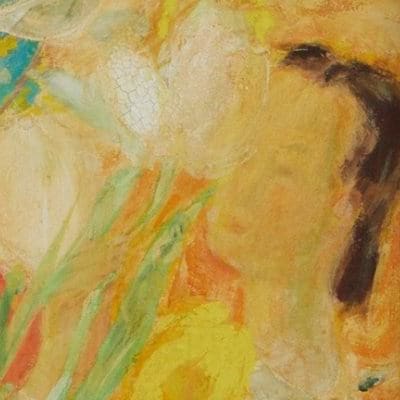
Le Pho, Woman with Flowers
Oil painting on silk mounted to masonite depicting an elegant young woman surrounded by vibrant flowers. Signed along the lower right. Illegibly titled along the upper right corner of the verso. With several indistinct ink stamps to the verso.
Estimate: $40,000-$60,000

Le Pho, Flowers
Small oil on canvas painting of a bouquet of flowers. Signed on the lower left. Sold at a higher price than estimated.
Estimate: $2,000-$3,000
Result: $7,500

Le Pho, Untitled
Oil on canvas painting of two women with potted plants in foreground. Signed along the lower left.
Estimate: $40,000-$50,000
Result: $55,000
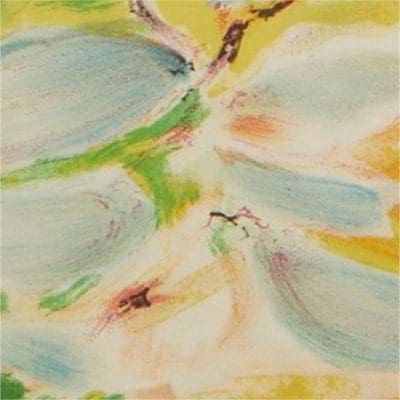
Le Pho, Figures in a Garden (3)
Set of three oil on canvas panels depicting three figures in a colorful flower garden. Sold together.
Estimate: $254,865-$382,300
Result: $2,283,600

Le Pho, Nue (1931)
Oil on canvas painting of a nude woman resting on the ground in muted earth colors. Painted in 1931.
Estimate: $509,620-$764,430
Result: $1,391,300

Le Pho, Family Life (1937-39)
Ink and gouache on silk work depicting a woman with a child against her knee. Many other people can be seen in the background.
Estimate: $231,605-$308,810
Result: $1,170,895
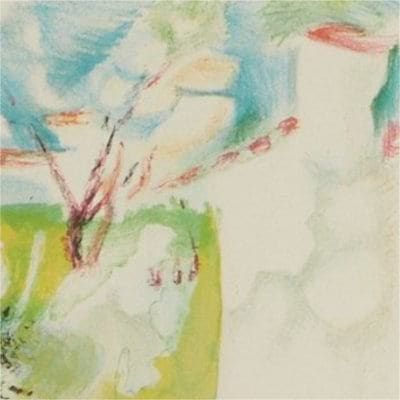
Le Pho, Paysage du Tonkin (1932-34)
Lacquer on panel piece showing the landscape around Tonkin in northern Vietnam. Painted in the 1930s.
Estimate: $154,800-$232,200
Result: $265,740
How Can I Sell My Le Pho Painting?
Heightened interest in Le Pho’s work and that of other Vietnamese artists has led to many of his paintings exceeding their estimated prices at auctions in recent years. Additionally, the wide range of materials and styles Le Pho employed over the decades have led to a huge range in estimated values for his works. In order to ensure you know the true value of your piece, an expert appraisal is highly recommended.
Revere Auctions Sells Your Le Pho Art
Seamlessly blending the styles and techniques of Vietnam and western Europe, Le Pho’s art has captured the attention of art collectors for generations. Revere Auctions has expert experience evaluating and selling Le Pho’s work at auction for competitive prices. Our art experts at Revere Auctions are ready to help you with any stage of your art journey, whether you are looking for an estimate of value, a USPAP certified appraisal, art restoration, or an effortless way to sell your art. We advertise our sales on more auction platforms than any other auction house in America, and regularly achieve record prices for our objects. If you are interested in selling with us, please reach out for a free online appraisal of your piece today.
Discover Works From More Artists Like Le Pho
Vu Cao Dam
A Vietnamese artist who studied at L’Ecole De Beaux Artes in Hanoi during the same period as Le Pho. He moved to Paris where he created bronze cast sculptures, and later paintings.
Victor Tardieux
Was a French painter and the Founder of L’Ecole De Beaux Artes in Hanoi, where he taught Le Pho.
Mai Trung Thu
Another Vietnamese contemporary of Le Pho. Mai Trung Thu specialized in silk painting with gouache, which he applied to the silk as a solid.
The Values of George Morrison Works of Art

Untitled, Abstract Oil on Paper Painting
George Morrison Oil on Paper Abstract Painting. Signed and dated 1957.
- Sold: $60,000

Landscape, Mixed Media on Strathmore Paper
Mixed media on Strathmore paper titled “Landscape” depicting an abstracted layered landscape, 1953. Signed and dated along the lower center. There is an unfinished still life painting along the verso.
- Sold: $55,000
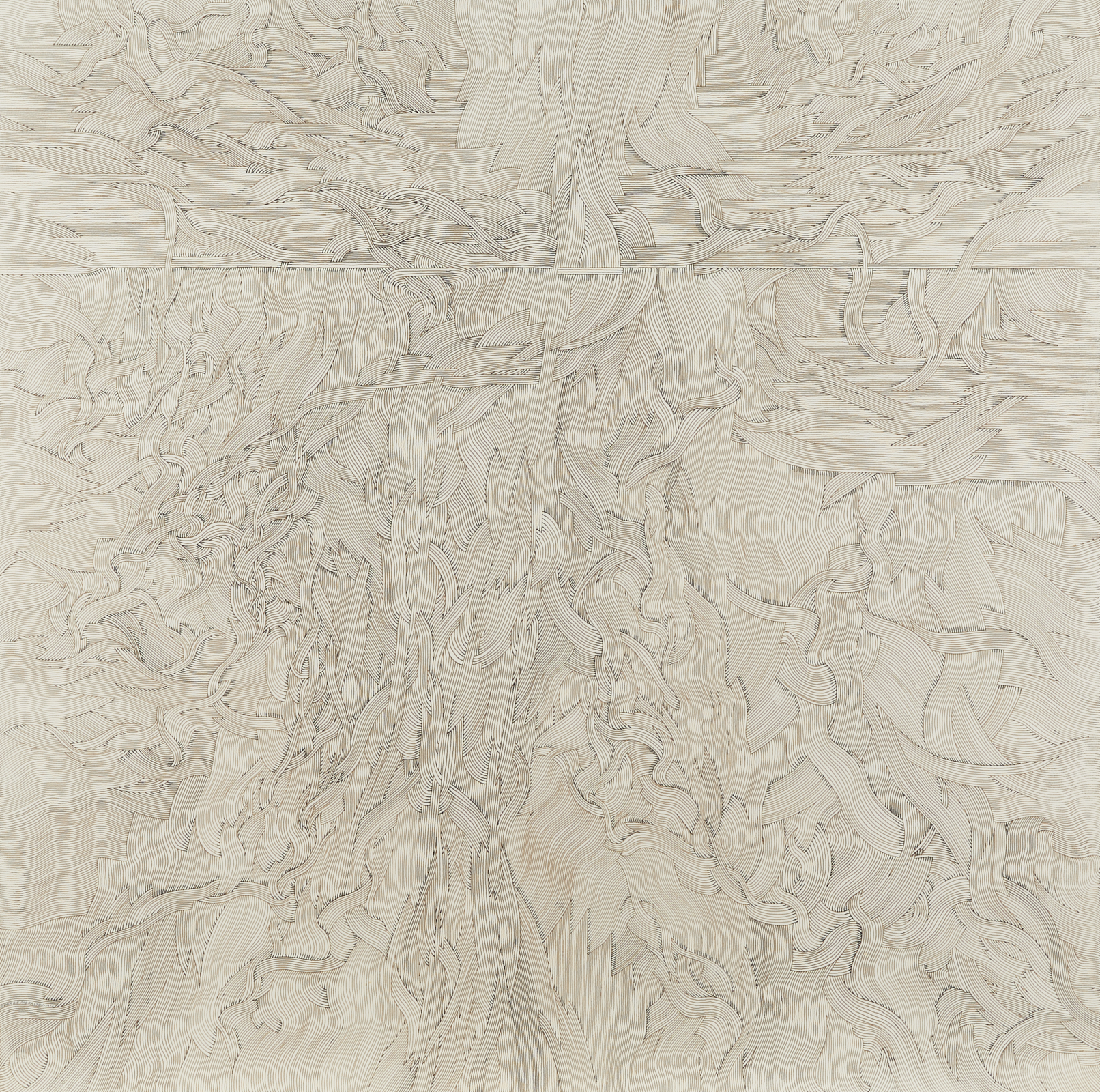
Untitled, Pen and Ink Line Drawing
Black ink on Strathmore paper depicting a horizon comprised of thousands of lines, 1972. A thread of lines runs through the center of the composition – connecting the upper and lower halves of the drawing.
- Sold: $40,000

Dappled Light Shadows (Red Rock Variation: Lake Superior Landscape), Acrylic on Canvas on Board Painting
Acrylic on canvas on board titled “Dappled Light Shadows (Red Rock Variation: Lake Superior Landscape)” depicting a deep red and purple sunset on Lake Superior, 1993. Signed, dated, and titled along the verso. Housed in a frame custom built by Morrison.
- Sold: $38,000

Mirrored Image, Gouache on Paper
Gouache on paper titled “Mirrored Image” depicting an abstracted layered landscape in rich yellows and oranges with hints of green, 1956. Signed and dated along the lower left; titled along the left margin behind the mat.
- Sold: $36,000

Descent on the Avenue, Oil on Canvas Painting
Oil on canvas painting titled “Descent on the Avenue” depicting an abstract scene painted with thick and vivid colors harmoniously dancing along the surface of the canvas, 1962. Signed and dated along the lower right. Further signed and titled along the verso.
- Sold: $30,000
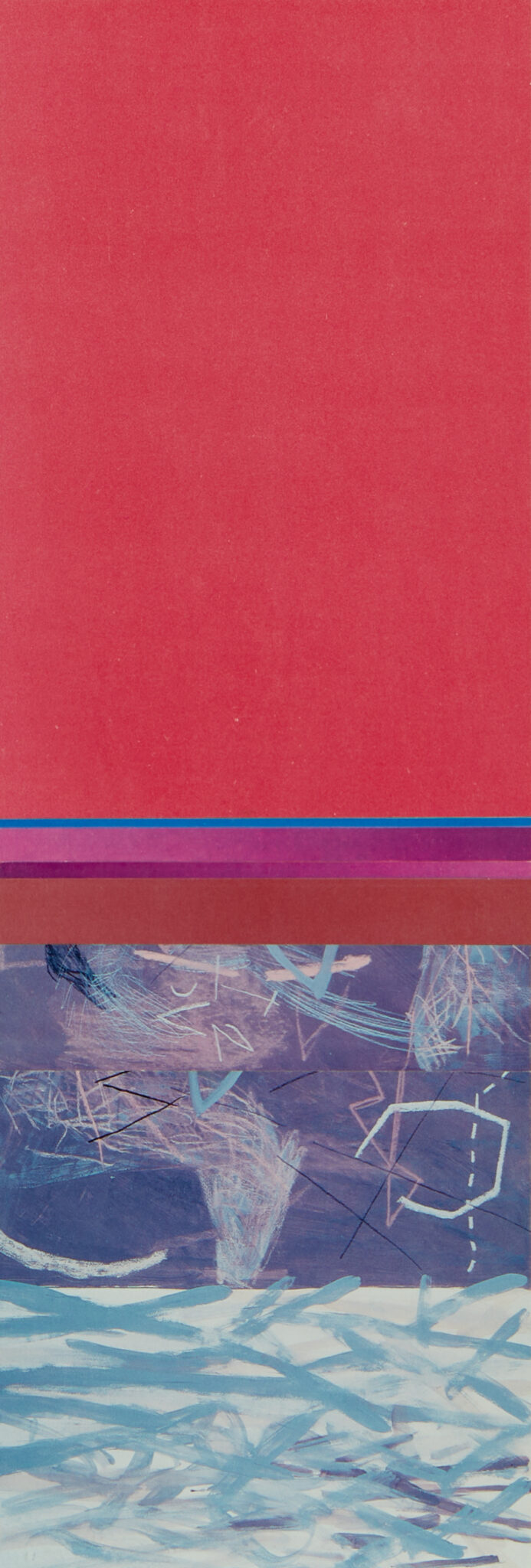
Hot Town Round Up: J. Quick To See Smiths, Paper Collage
Paper collage titled “Hot Town Round Up: J. Quick To See Smith,” depicting a fragment collage referencing his relationship to Jaune Quick-To-See Smith (Salish and Kootenai Tribes of the Flathead Indian Nation, b. 1940), 1982. With a plan of the artwork along a fragment of notecard affixed to the verso. Pencil signed and dated along the lower left.
- Sold: $13,000
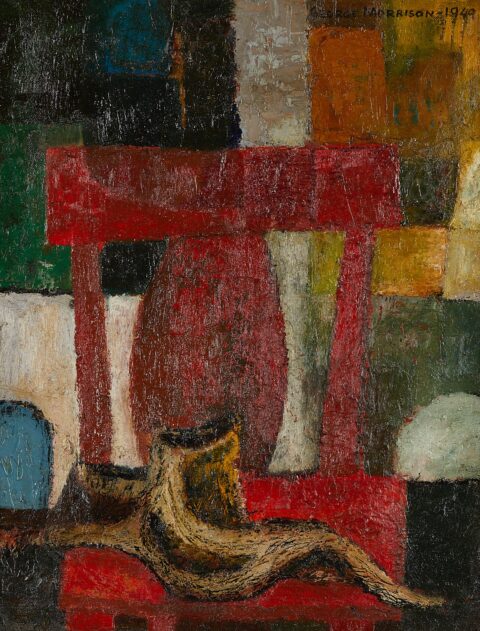
Untitled Still Life with Pipe, Oil on Canvas Painting
Oil on canvas still life of a pipe on a chair, 1949. Signed and dated along the upper right. Pencil inscriptions along the verso of the frame.
- Sold: $11,000

Untitled Figures, Mixed Media on Paper
Mixed media on paper painting depicting an abstracted figure in blue, red, yellow, and black, 1946. Pencil signed and dated along the lower right.
- Sold: $11,000
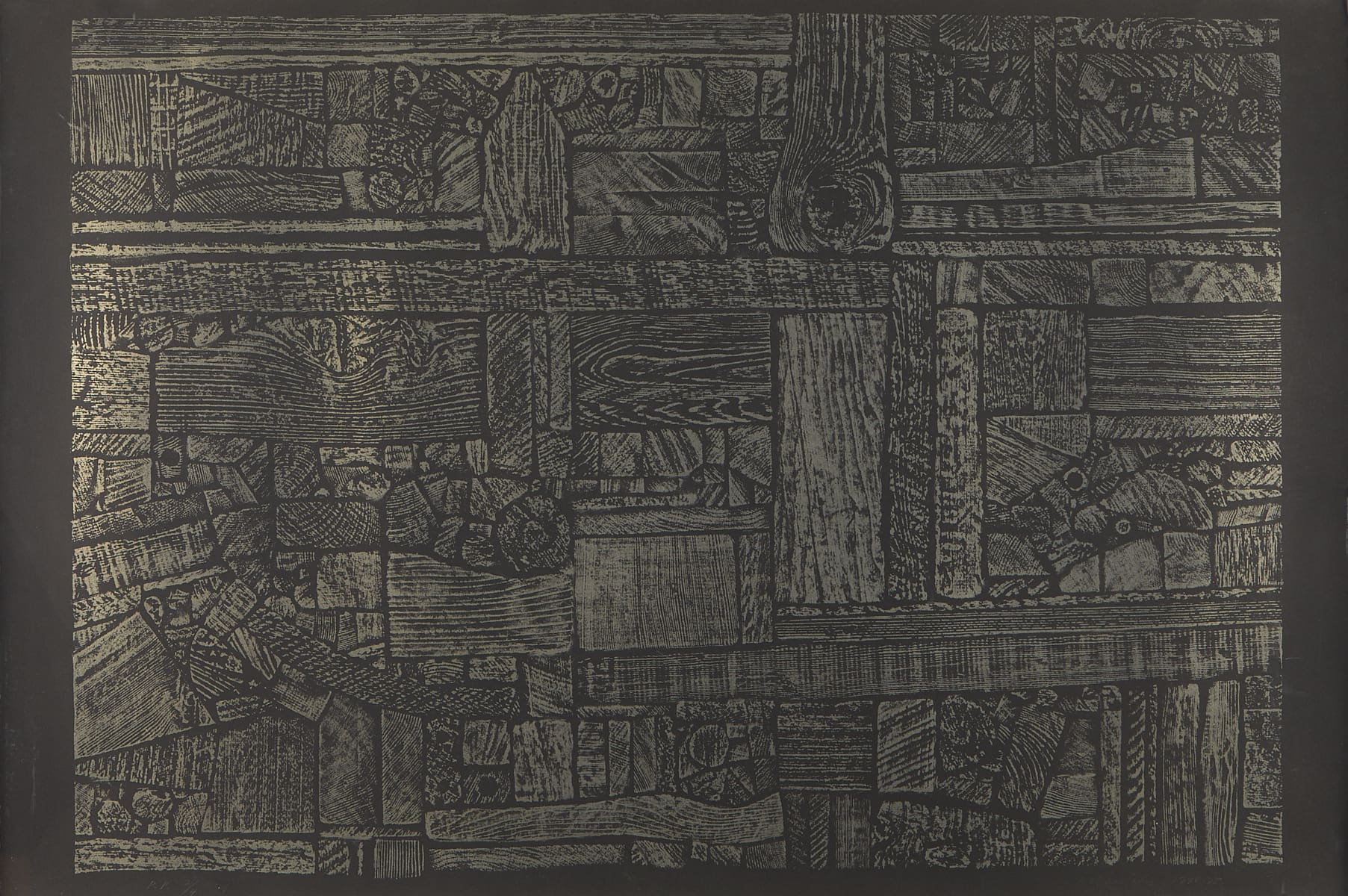
Untitled Woodgrain Collage, Woodcut on paper
Woodcut on paper depicting an intricate pattern of contrasting woodgrains in gold metallic ink, 1976-78. Pencil signed and dated along the lower right; numbered P.P. 1/4 along the lower left; Vermillion Editions Limited blindstamp along the lower left.
- Sold: $9,500

Arterial Structure, Ink and Watercolor Painting
Abstract ink and watercolor painting on paper titled “Arterial Structure.” Signed, inscribed “Antibes,” and dated January 1953 along the lower margin. Further signed and titled in pen along the backing. Inscribed “Purchased May 1955 at Walker Art Gallery, Minneapolis, Minn” in red pen along the backing.
- Sold: $9,000
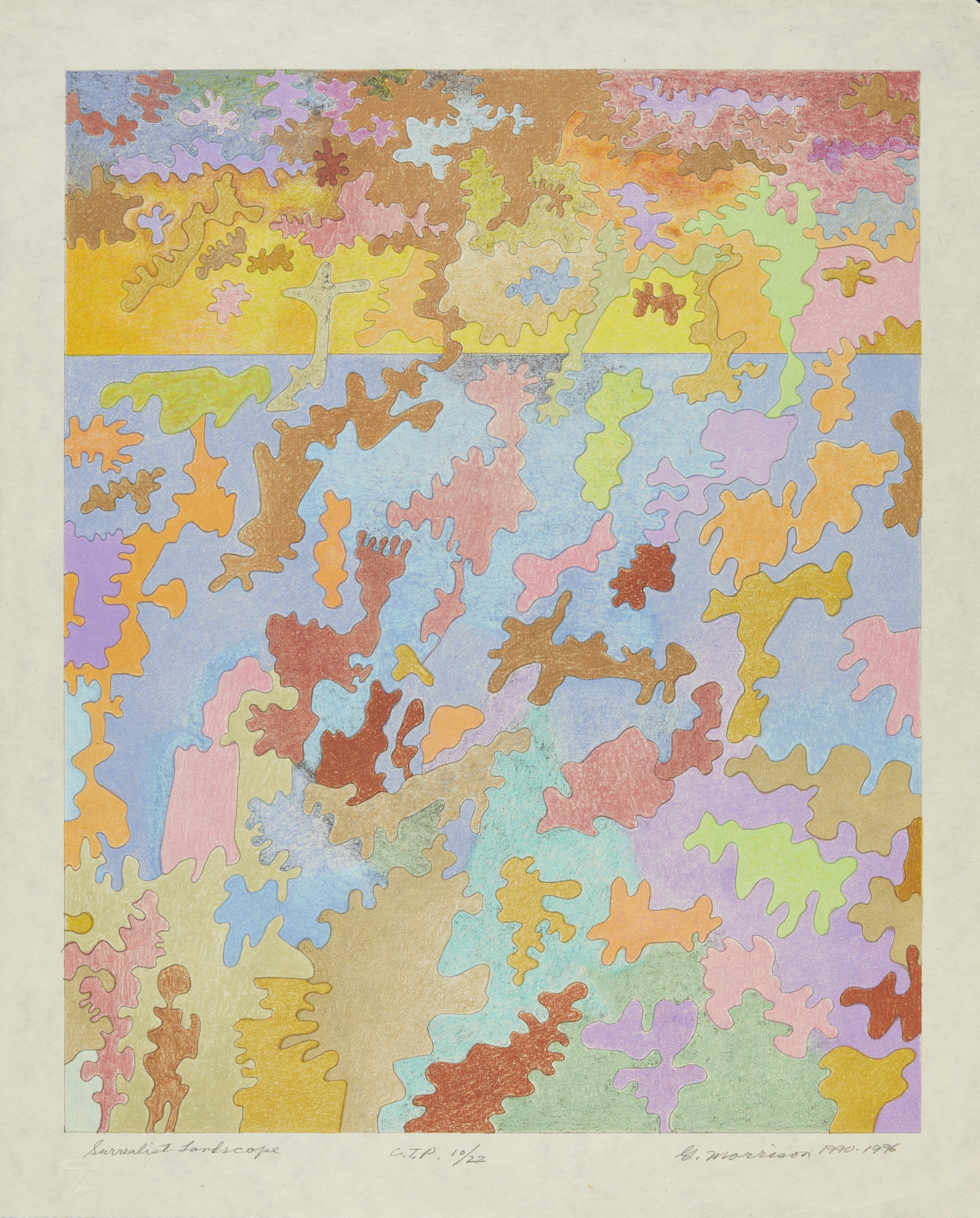
Surrealist Landscape, Lithograph
Color lithograph on Japan paper titled “Surrealist Landscape” depicting a horizon in vibrant colors, 1990-96. The colors fit together perfectly, as if pieces of a puzzle, to form a colorful whole. Pencil signed and dated along the lower right; numbered CTP 10/22 along the lower center; titled along the lower left.
- Sold: $7,000

Mountainside, Drawing
Ink on paper drawing titled “Mountainside” depicting a New Mexico landscape, 1982. Signed and dated along the lower left. Inscribed along a piece of paper affixed to the verso “Western Landscape – ‘Mountainside’ – Imaginative Drawing- Frottage Technique-Chimayo, New Mexico – Dec. 23, 1982.”
- Sold: $5,500

Untitled Cast Metal Sculpture
Cast metal sculpture, similar in form to his Chiringa Form sculptures, which were inspired by aboriginal Australian churinga stones. Morrison understood these as a form of totem, an important motif through his sculptural work.
- Sold: $4,000

Untitled, Gouache
Abstract composition in gouache on paper, with textured radiating stripes in red and orange on a pale yellow background. Signed and dated 1959 along the lower left.
- Sold: $2,000
Revere Auctions Sells Your George Morrison Art
Revere Auctions provides the best value for your George Morrison artworks through extensive consignment and acquisition services.
Our art experts at Revere Auctions are ready to help you with any stage of your art journey, whether you are looking for an estimate of value, a USPAP certified appraisal, art restoration, or an effortless way to sell your art. We advertise our sales on more auction platforms than any other auction house in America, and regularly achieve record prices for our George Morrison artworks. If you are interested in selling with us, please reach out for a free online appraisal of your piece today.

What is the Artist Hiroshi Yoshida Known For?
Artist Hiroshi Yoshida had an innate ability to balance authentic Japanese imagery, culture, and techniques with the Western-style painting he had learned and developed over the years. His travels around the globe further gave Japanese artist Hiroshi Yoshida the confidence that his artwork was unique. The artist mostly combined traditional ukiyo-e subject matter, particularly landscapes, with the Western-style Impressionist sensibility for light, perspective, and mood.
Japanese Woodblock Printing
Japanese woodblock printing originated in the Edo period (between 1603 and 1867) as a method to widely distribute writings, specifically Buddhist scripture. By 1765 new technologies allowed color to be added to the wood prints where previous artists would have to add them by hand. This led to the transition of text-based prints to prints of people, historical events, and landscapes that artists like Hiroshi Yoshida became known for.
Valuable Hiroshi Yoshida Woodblock Prints
Hiroshi Yoshida’s Japanese Woodblock prints are still famous today for their blend of Western style with Japanese hues and techniques. Here are a few popular pieces among the wide variety of oil, watercolor, and woodblock prints you can find today.

Hiroshi Yoshida, Kameido Bridge
Grand Canyon (1925)
Grand Canyon is a bright and vibrant print measuring 11.5 x 16 inches. The bright blues and oranges add dimension to the canyon, while the deeper blues, greens, and grays enhance the contrast to give the impression that part of the canyon is illuminated in the sunshine.
Selling for: $8,000-$9,600
Kameido Bridge (1927)
The Kameido Bridge was part of a twelve-part series considered to be Hiroshi Yoshida’s masterpiece. There were 75 prints made of this scene, and it carries his trademark contrast of bright pinks and blues to darker hues.
Selling for: $1,600-$2,800
Pittsburgh (1928)
This small piece measures 3 ¼ x 5 inches. Also known as Evening in Pittsburg, this Hiroshi Yoshida made this woodblock print in 1928. The subtle sky offsets the moody deep colors of the bridge and boat. The negative space created to represent fog is made more real with the warm, golden yellow lights that illuminate the boat and reflect off the water.
Selling for: $800-$1,400

Hiroshi Yoshida, In a Temple Yard
In a Temple Yard (1935)
The scenic view of In a Temple Yard captures Yoshida’s ability to balance color, form, and design with beautiful ease. The bright pink cherry blossoms and pink sky draw you in with shades of blue to add contrast to the background. The temple stands firmly in the center, but the women in bright kimonos draw your attention back to the foreground. Yoshida’s brilliant talent is apparent in the reflections we see in the pond that are just imperfect enough to make you believe the water can be touched.
Selling for: $2,000-$2,600
Mt Rainier (1925)
Part of his earliest works, this painting of the United States landscape shows a mastery of color and realism that Yoshida is known for. This piece measures 15.5 x 21 inches and is one of his larger pieces.
Selling for: $2,000-$3,000

Yoshida, Taj Mahal no. 1
Taj Mahal (1932)
The Hiroshi Yoshida Taj Mahal pieces showcase some of the views that captured Yoshida’s attention during his travels during his career. The bright sun in India provides the perfect environment for Yoshida to balance the cool air that the trees and shadows can provide, with the Taj Mahal as the centerpiece that stands out ever so slightly. True to form, the people that artist Hiroshi Yoshida depicts wear bright colors to stand out and add more depth to the landscape.
Selling for: $2,500-$5,500

Hiroshi Yoshida, Yarigatake
Discover Works From Artists Like H. Yoshida
Hasui Kawase (1883-1957)
Similar to Hiroshi Yoshida, Hasui Kawase was a woodblock print artist during the sōsaku-hanga movement.
Kiyoshi Saitō (1907-1997)
Another notable 20th-century artist known for his contributions to sōsaku-hanga and for being the first Japanese printmaking artist to win at the world-famous São Paulo Biennale in 1951.
The Yoshida Family Legacy
It would be remiss not to bring up the legacy that Yoshida left behind with his family. His wife and children were inspired and taught by Yoshida to create their artwork.
Get in touch with Revere Auctions today, to learn even more about Yoshida artworks and their value.

